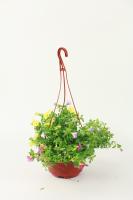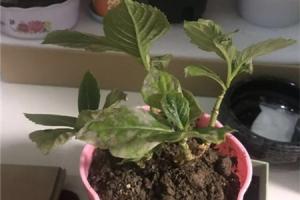Introduction
Palm trees have become increasingly popular as houseplants in recent years, thanks to their tropical appearance and low maintenance requirements. However, like any other plant, palm trees require proper care to thrive. In this article, we'll discuss the best practices for taking care of your palm tree plant.
Light
One of the most important factors to keep in mind when caring for a palm tree is light. Most palm trees require bright, indirect light to grow properly. Direct sunlight can damage the plant's leaves and cause them to turn brown. If you have a South or West-facing window, it's best to place your palm tree a few feet away to avoid any direct sunlight. For North or East-facing windows, your palm tree will benefit from being placed closer to the window.
Water
In general, palm trees prefer to be kept consistently moist but not waterlogged. Soil that is too wet can lead to root rot and decay. To keep your palm tree healthy, it's best to water it when the top inch of soil feels dry to the touch. The amount of water your palm tree needs depends on various factors such as the type of palm, the pot size, and the temperature and humidity of the room. A good rule of thumb is to water your palm tree once a week, but adjust the frequency based on your plant's individual needs.
Humidity
Palm trees are used to tropical climates, which means that they thrive in areas with high humidity. Unfortunately, dry indoor air can be stressful for many houseplants, including palm trees. To increase the humidity levels around your palm tree, you can place a tray of water near the plant, use a humidifier, or mist the leaves regularly. These methods will help prevent the tips of the leaves from turning brown and keep your palm tree looking lush and healthy.
Fertilizer
Fertilizing your palm tree can help it grow stronger and more resilient. During the growing season (spring and summer), it's essential to provide your palm tree with a balanced fertilizer every two to three months. Be mindful of over-fertilizing, which can lead to yellowing leaves and other issues. Always follow the instructions on the fertilizer package to ensure you're providing your plant with the right amount of nutrients.
Pests and Diseases
Like any other living organism, palm trees can fall prey to pests and diseases. Common pests that affect palm trees include spider mites, mealybugs, and scale insects. Cleaning the leaves with a damp cloth regularly and inspecting your plant frequently can help prevent pest infestations. If you notice signs of an infestation, such as webbing or small insects, treat it with a natural pesticide or insecticidal soap. Some common diseases that affect palm trees include leaf spot, root rot, and palm wilt. Practicing good sanitation and avoiding overwatering can help prevent these diseases from taking hold.
Conclusion
By following these best practices, you can keep your palm tree plant healthy and thriving for years to come. Remember, though, that each palm tree is unique and may have different needs. If you have any questions or concerns about caring for your plant, don't hesitate to consult a local garden center or plant expert for guidance.

 how many times do yo...
how many times do yo... how many planted tre...
how many planted tre... how many pine trees ...
how many pine trees ... how many pecan trees...
how many pecan trees... how many plants comp...
how many plants comp... how many plants can ...
how many plants can ... how many plants and ...
how many plants and ... how many pepper plan...
how many pepper plan...































